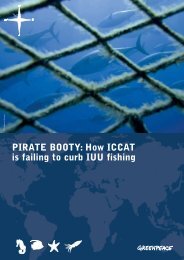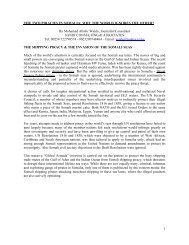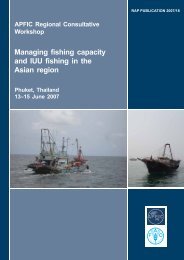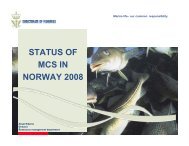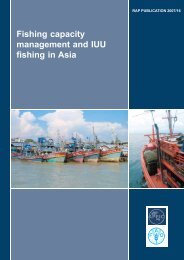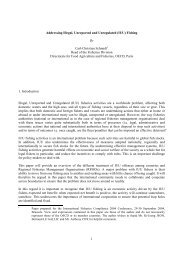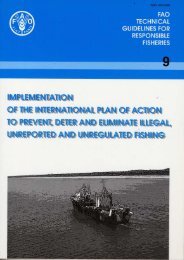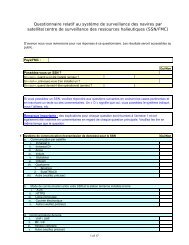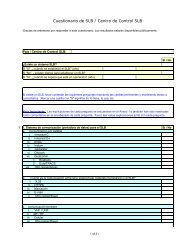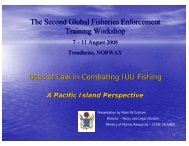Fishing Vessel Monitoring Systems: Past, Present and Future
Fishing Vessel Monitoring Systems: Past, Present and Future
Fishing Vessel Monitoring Systems: Past, Present and Future
Create successful ePaper yourself
Turn your PDF publications into a flip-book with our unique Google optimized e-Paper software.
VMS: <strong>Past</strong>, <strong>Present</strong> <strong>and</strong> <strong>Future</strong> 11<br />
from a range of commercially available models. This is particularly true of distantwater<br />
vessels that participate in VMS systems of several countries, most of which<br />
sell licenses as a means of earning income. Few coastal states that welcome<br />
foreign vessels have the political clout to impose stringent requirements as to VMS<br />
equipment, most of them being, in addition to the license fees received, net<br />
recipients of foreign aid from the countries whose fleets fish their waters.<br />
The security quality of this st<strong>and</strong>ard equipment, in terms of tamper proofing, varies<br />
widely. Furthermore, from the time of purchase, this equipment is in his<br />
possession, or under his control, <strong>and</strong> is only relatively rarely subject to inspection. It<br />
is not difficult to imagine, in such a context, that an operator who participates in<br />
illegal fishing activities could conspire to corrupt VMS data so as to mislead the<br />
authorities by, in the first instance, choosing equipment which he deems most<br />
vulnerable to modification for this purpose. Having done so, he can then, virtually<br />
at his leisure, carry out the work necessary to corrupt the data.<br />
3.2 VMS equipment types<br />
In this connection, it is useful to examine a number of different types of<br />
transceiver equipment commonly used around the globe in fisheries<br />
management. Typically, a transceiver is installed on-board a fishing vessel <strong>and</strong><br />
used to record the position of the vessel at frequent intervals throughout its<br />
voyage. These position reports are then transmitted via satellite back to an FMC<br />
under the control of the local fisheries management authority. Reports may be<br />
transmitted either in real-time or on a store <strong>and</strong> forward basis, depending on the<br />
constraints imposed by the satellite communications system employed.<br />
The use of this type of equipment for vessel monitoring displays one important<br />
constraint – the equipment must be installed on a fishing vessel <strong>and</strong> operate<br />
autonomously, relying on the good will of the vessel’s crew to leave the<br />
equipment undisturbed. Since large financial gain may be obtained by a fishing<br />
vessel that is able to fish in regions or at times when it is prohibited from doing<br />
so, there is considerable incentive to tamper with the transceiver equipment.<br />
This tampering may aim to either:<br />
• Prevent position reports from being obtained;<br />
• Prevent position reports from being transmitted back to the VMS;<br />
• Falsify position reports without the knowledge of the VMS.<br />
3.3 Tampering suspects<br />
Tampering may be carried out or aided by a range of parties with particular<br />
interests <strong>and</strong> resources to devote to tampering, including:



